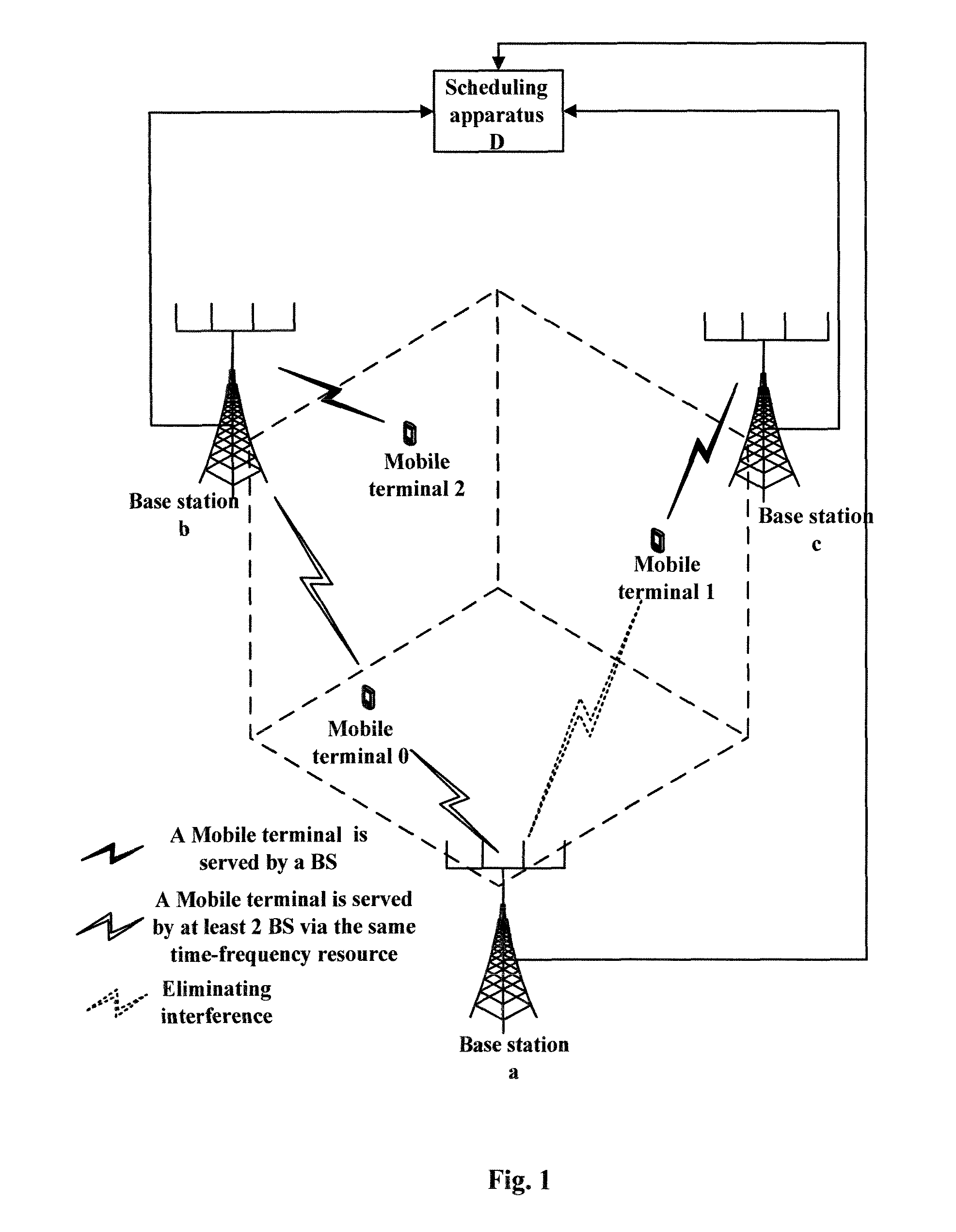Cooperative MIMO among base stations with low information interaction, a method and apparatus for scheduling the same
a low information interaction and base station technology, applied in the field of suppressing inter-user interference (ici) in wireless network, can solve the problems of high computation complexity, limited system support total user number, and low connection capacity, and achieve the effects of suppressing inter-user interference, consuming a large amount of backhaul network resources, and improving outpu
- Summary
- Abstract
- Description
- Claims
- Application Information
AI Technical Summary
Benefits of technology
Problems solved by technology
Method used
Image
Examples
Embodiment Construction
[0039]FIG. 1 shows a topology diagram of wireless network for supporting the scheduling of the communication between the base station and mobile terminal according to one embodiment of the present invention. It should be understood by those skilled in the art that the depicted network may be WiMAX network, 3G network or next generation mobile communication network, and is not limited to these specific embodiments. Each base station located in the cooperative area under the control of a scheduling apparatus, that is, each base station communicatively coupled to the scheduling apparatus, is referred to as a cooperative base station hereafter, as is just like the base stations a, b, c in FIG. 1. The scheduling apparatus can be either a physically individual network device or integrated into a base station. It should be understood that the scheduling apparatus is not limited to be an independent network equipment or base station, it may be a network equipment dedicated for carrying out ...
PUM
 Login to View More
Login to View More Abstract
Description
Claims
Application Information
 Login to View More
Login to View More - R&D
- Intellectual Property
- Life Sciences
- Materials
- Tech Scout
- Unparalleled Data Quality
- Higher Quality Content
- 60% Fewer Hallucinations
Browse by: Latest US Patents, China's latest patents, Technical Efficacy Thesaurus, Application Domain, Technology Topic, Popular Technical Reports.
© 2025 PatSnap. All rights reserved.Legal|Privacy policy|Modern Slavery Act Transparency Statement|Sitemap|About US| Contact US: help@patsnap.com



